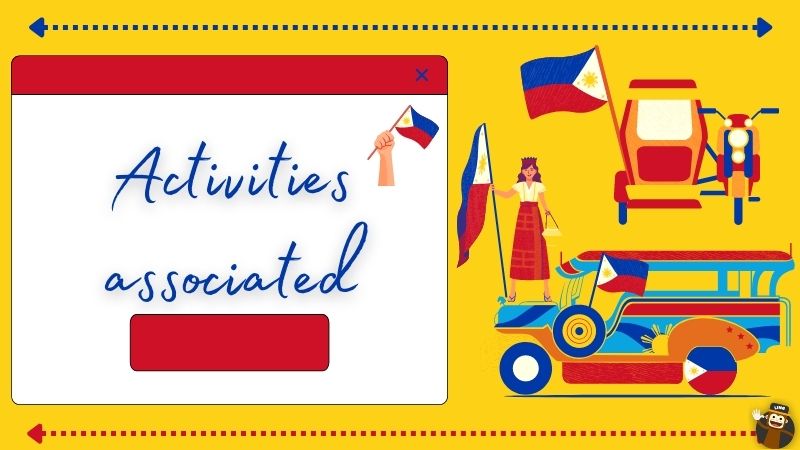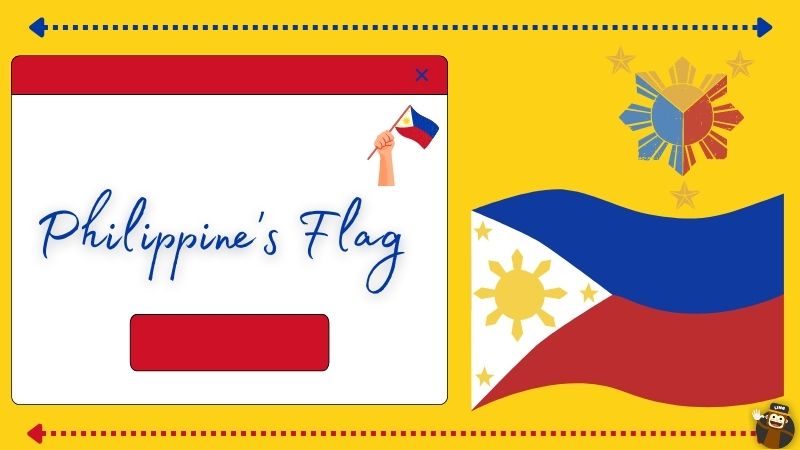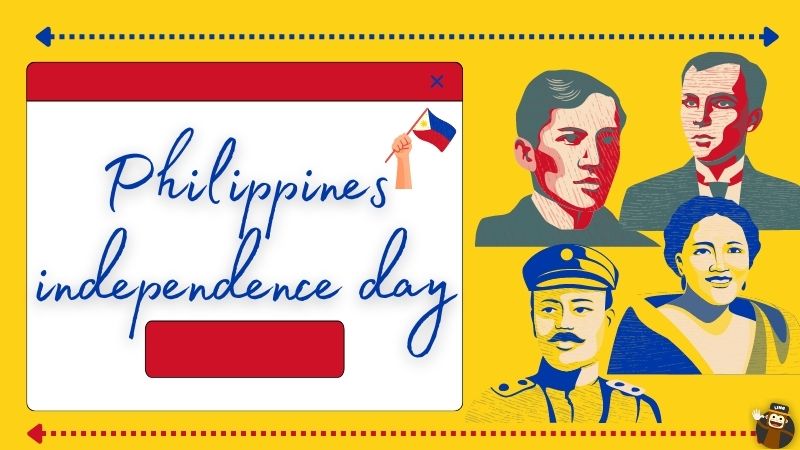Let’s learn about all the major events and details about the Philippine independence day. Let’s cut to the chase right away!
Philippines Independence Day
The Philippines is a beautiful country, located in the western Pacific Ocean. This country is known for a significant number of islands, as it has 7107 islands, and also for its delicious fruits.
History of Philippines Independence Day
The Philippines was known as a Spanish Colony about 300 years ago, Ferdinand Magellan, who was a Portuguese Explorer, wanted to claim the Philippines for Spain, but one local chief named Lopu Lopu refused, which was unbearable for Magellan, and he tried to murder Loko but failed and was killed in the battle of Mactan.
Spanish Rule
An Expedition led by Miguel Lopez de Legazpi in 1565, had provided a platform for Spaniards to hold their feet in the Philippines. The capital of the country was established named Intramural and was renamed Manila after some time.
The Feudal system was established after Spain took over the country in which all large firms and estates were grabbed by Spain and Filipinos were just set as their workers. Spanish rule was prosperous for the Philippines, but the British captured the capital in 1762 at Manali bay and was returned in 1764.
Happenings of 19th-century
José Rizal was a man behind the spread of feelings of nationalism among the people with the help of the novels that he had written. El Filibusterismo and Noli me Tangere which means Touch Me Not. Moreover, he started the movement named “Liga Filipina” in 1892, which preferred Reform to Revolution. Sadly, he got arrested for this movement.
One commendable Organization was also formed in August 1896 called “Katipunan” and it was established by Andres Bonifacio. Jose Rizal got executed under the blame of supporting this revolution on the 30th of December 1896, it was a wrong allegation. But with this arrest, the Philippines Revolution flourished and that’s how we know about the Philippine revolution.
A war was started between Spain and the US in 1896, also known as the Spanish American War, in which Spanish rule was ruptured in Manila (the capital of the Philippines) by American forces in 1898. The 1898 war was really important as commander George Dewey played a vital role in this war to defeat the Philippines.
He served as elected president in the Philippines, and he was a great leader and was appointed as an Asiatic squadron as well. His presidential proclamation made great progress in the state.
Captivating information
Filipino priests opposed Spanish rule at first and many religious leaders got together in Roman Catholic churches to talk about the country’s independence.
The Philippines was declared independent on June 12 by Emilio Aguinaldo. Aguinaldo was kneed down in 1902 in the Philippine-American War and American rule was taken over again.
President Fidel was a commander and Chief and served the Presidency from 1902 to 1907. Furthermore, president Diosdado Macapagal is also a well-known president, and he was remembered as a reformist president who served from 1961 to 1965.
The 20th century (The American Rule)
The American flag was raised in the Philippines in 1935. The Philippines were semi-independent under American rule. America provided teachers to the Philippines, which enhanced their literacy rate. But still, there was a Kind of Cold war between Filipinos and America.
Japan invaded Manila on the 30th of December 1941 and then the U.S. formally annexed the Republic of the Philippines back in 1944 October. Finally, the Philippines gained independence on the 4th of July 1946 as they wanted to set their destiny.
Manuel Roxas was the first President. The Philippines has two Independence Days. The first one is on the 12th of June 1898 and this is for general declaration as they got their islands free this day. This independence day was declared by General Emilio Aguinaldo and Second Independence Day is on the 4th of July as the Philippines got rid of Spanish domination in 1946 therefore this Independence Day is considered the real one.
Important Acts
There are some important Acts that need to be understood as we are discussing the Philippines.
Republic act
The republic act is policymaking legislation to carry out the rules of the constitution. It is made by the President and approved by congress.
Peace treaty
The Moro Islamic Religious Act (MIRA) consists of several Filipino Rebels, who wanted to establish a separate state in the Southern Philippines and these Filipino Rebels led this chaos further. This resulted in a war between the Government and soldiers in 2000. A Peace Treaty was signed to resolve this conflict after 17 years of peace negotiation.
Activities associated with Independence Day

These things are carried out on the Philippines independence day:
Flag-waving
All other flags have a sense of symbolism among them. So the Filipino community makes their own flag and this flag is for their families. It shows the hopes and strengths of every family.
Attending Of Military Parade
The Military Parade has been attended by Filipinos.
New menu
Filipinos try new food on this day. Something other than what they eat in their routine menu.
Traditions associated with Philippines Independence Day
- The Filipinos also follow some traditions on their Independence Day.
- They go with their families to attend parades.
- They visit some places for enjoyment.
- They remember the sacrifices given to gain this Independence. There is great participation from both Government and citizens.
- Schools, firms, etc, are closed as it is a public/ national holiday.
- They also cherish their culture, sovereignty, and norms on this day.
National Anthem of the Philippines
The national anthem of the Philippines is a product of the Revolutionary times of the Philippines. The need for the Philippine National Anthem was recognized by General Emilio Aguinaldo to gather against Philippine Rebels. He collaborated with Julian Felipe, who was a composer, to work for Filipino revolutionaries on June 5th, 1898.
Felipe prepared the Melody in 6 days sitting in Aquinaldo’s living room. He named The Anthem “Marcha Filipino Magdalo ”. This music was finalized and renamed national Philippine which means “Philippines Nacional march”. It was published on June 12th, 1898 for the very first time.
Aguinaldo declared the Philippines as Asia’s first independence flag of the state and was also displaced in June and did not have any lyrics until some time. After some time, lyrics were indulged in the Anthem by a 13– year-old young soldier, who entitled it “Filipinas“. It included Spanish versus.
These lyrics have been translated into many other languages as well. There was some criticism that Filipinos and their anthem had to face and in 1956 a new version of The Anthem was released through TV, radio, cinemas, etc. This version is followed in the Philippines today.
Philippine’s Flag

The Philippine flag is divided into two horizontal bands of two colors blue at the top and red at the bottom. There is a white triangle on one side that consists of a sun having 8 rays with each Ray having 3 individual rays. Furthermore, there are three stars at the three corners of the triangle.
This flag was designed by General Emilio Aquilando himself, and it was issued by Dona Marcela, her daughter Lorenza, and Mrs. Delfina Herboza. The white part of the flag shows equality and Justice, the red field is for the sense of Patriotism, blue one stands for peace and truth.
Rays around Sun show 8 provinces that were put under Martial Law by colonizers and 3 stars are the symbol of Luzon, Visayas, and Mindanao, which are Islands of the Philippine Luzon is located in the north Mindanao in the southernmost and Visayas in the middle of the archipelago.
Wrapping Up

That’s it for this blog. You can also check out other blog posts by Ling App to learn the Tagalog language. Make sure to know about Filipino Culture and get ready to travel to the Philippines. Learn Tagalog with the Ling App. Happy Learning!















